Private practices have to work hard to stay viable. They face substantial financial stress as inflation continues to rise and reimbursement rates decline.
Meanwhile, workforce challenges, such as staffing shortages and burnout, are creating a pressure cooker environment.
“With inflation resulting in rising overhead costs, it becomes more difficult for private practices to remain viable,” said Marsha Haley, MD, in a recent article from Becker’s ASC Review. Dr. Haley is a clinical assistant professor of radiation oncology at the University of Pittsburgh.
“These practices are then vulnerable to purchase by large, vertically integrated health systems. Physicians and their patients may then become victims of the corporate practice of medicine, which results in increased physician burnout and a decline in the quality of care.”
So, how does an administrator navigate these stressful waters? In an uncertain economy, it’s time to increase efficiency while reducing costs.
In this article we will be addressing:
- Financial landscape and problems facing modern clinics
- Improving workflows by reducing bottlenecks
- Enhancing workflow efficiencies
- Implementing tech solutions

4 Steps to Implement Workflow Improvements in Your Orthopedic Clinic
Eager to see improvement now? Here are ways to jumpstart workflow implementations.
Step 1: Identify the Bottlenecks
First things first: make a list of bottlenecks that are causing stress and backlog in your surgery center. Once you have identified those, start to brainstorm ways to fix the issue. Using free software such as Miro can help you map out issues and storyboard solutions. This is also a digital way to collaborate with coworkers.
Step 2: Analyze the Causes
Once bottlenecks have been identified, analyze what is at the root of the issue. What are key metrics that you can track to see if the problem is getting worse or better?
Some metrics could be tracking time from service to billing, percentage of completed patient surveys, number of post-surgery readmissions, or number of billing WIPs.
Step 3: Develop and Implement Solutions
Finally, it’s time to implement solutions that will reduce bottlenecks and optimize workflows. Look at the KPIs developed to help determine progress: how can the ASC staff directly address the causes of these problems?
This may be a good opportunity to demo software and determine if something that works alongside an EMR would be a good investment.
Step 4: Monitor and Adjust
Lastly, once solutions have been implemented, it’s time to monitor and adjust. If the solution is causing problems for staff members, it probably needs to change.

Why Optimize Your Orthopedic Clinic Workflow?
When diving into the current workflow process, administrators can identify inefficiencies that are either costing the surgery center or causing staff to overextend their current roles.
While it’s difficult to commit the time and effort to evaluate the current process, a workflow audit offers numerous long-term benefits:
- Navigating rising overhead costs: Inflation and rising overhead costs are one of ASC owners’ greatest concerns. There are two obvious ways to combat rising costs: increase revenue (by performing more surgeries) or decrease costs. When surgery centers optimize workflow, they can keep expenses in check. One example is adding on software that aids in postoperative dictation which gives surgeons more time for other tasks but also reduces costs associated with the dictation process.
- Increased profit margins: Efficiency is directly linked to profitability. As reported in VMG Health’s 2022 “Multi-Specialty ASC Benchmarking Study,” ASCs’ EBITDA ranges from approximately 14 to 41%. Operational efficiency makes an enormous difference in the profit margins of the practice.
- Better patient experience: One recent study found that patients had to wait an average of 63.9 minutes for a doctor’s consultation in an outpatient surgery center. Dialed-in workflows mean that patients can be seen more quickly – and patients will be more satisfied. Take-home durable medical equipment can also improve a patient’s experience because it delivers less risk, enhances patient control, and can reduce the risk of readmission.
- Better post-op data: Workflow can also affect the quality of care. Accurately recording patient information has a major impact on proper treatment and follow-up. Automating post-op surveys helps ensure data does not fall through the cracks. Completing follow-up surveys could help identify problems before they lead to readmission.
- Happier staff: When a workflow is adequately optimized, it helps reduce mundane tasks for surgery center staff. This can mean a less stressful workday and more time with patients rather than paperwork.

Identifying and Addressing Bottlenecks in Orthopedic Clinic Workflow
In the midst of busy surgery center life, it can be easier to start with the basics instead of jumping head-first into a full-scale optimization effort.
Identify some of the obvious items that drain time and resources, then poll other center staff to see if they can pinpoint other bottlenecks.
Reimbursements, bill sheets, scheduling, and internal communications are all common roadblocks for surgery centers.
Here are examples of bottlenecks as well as ideas for solutions:
Bottleneck 1: Declining Reimbursement Rates
Many administrators are growing concerned about insurance companies’ declining reimbursement and payment rates. In a recent study, CareCloud reports that 65% of physicians have noticed a steep decline in reimbursements, which has impacted profitability.
Working with knowledgeable billing teams may help supply your surgery centers with resources that could be covered by the patient’s insurance companies.
Bottleneck 2: Inefficient Patient Scheduling
Scheduling seems simple in theory, but managing patient and surgeon schedules, staff, and resources, emergencies, and cancellations can be a nightmare.
It’s important to have the right scheduling software to help keep the books organized and efficient.
Bottleneck 3: Poor Communication Among Staff
The top priority each day is to perform quality surgeries and send healthy patients home to recover. But, in the hustle and bustle, it is easy for things to get lost in translation or tasks to slip through the cracks.
Working on better communication among staff can help reduce errors and delays. Establishing policies such as consistent team meetings, easy-to-follow protocols, and using tools like PRO-MAPP for streamlined communication can help fix this problem that causes bottlenecks inside ASCs.
Enhancing Workflow Efficiency with Mainstream Technologies
Software is one simple way to streamline workflows. Especially as AI continues to evolve, workflow efficiency will be greatly enhanced with the use of technology.
While all surgery centers utilize tools such as EMRs, additional automation functions could benefit your center.
Tag-along software such as ScanChart and PRO-MAPP can aid in these problems. Both of these tools work alongside an EMR system but help streamline communications and billing processes.
The Role of Electronic Medical Records (EMR) — and the Drawbacks
After the HITECH Act was passed in 2009, all health systems had to adopt some form of EMR system. While this legislation propelled healthcare into the digital age, electronic medical record software isn’t short of flaws. EMRs and EHRs do streamline data management, but many hospitals and surgery centers complain that the software can be clunky or difficult to use. Others feel it is more suited for a traditional hospital instead of a surgery center.
The Power of Automation in Orthopedic Clinic Workflow
Using supplemental software alongside an EMR can help increase automations and reduce manual tasks. Appointment reminders, billing emails, post-op dictation, and patient follow-up surveys can all be automated, increasing communications, better-organized data, and reducing manual tasks.
However, for smaller ASCs or clinics, the cost of adopting new software, training staff, and purchasing the tablets to implement can be an uphill battle — not to mention, getting everyone on board.

Orthopedic Clinics are Turning to PRO-MAPP to Address Key Bottlenecks
PRO-MAPP is one way that surgery centers can easily fix bottlenecks within the current process system. This software not only helps streamline communications but has also helped surgery centers save money.
PRO-MAPP can help address potential bottlenecks like:
- Reducing errors in data collection
- Improving efficiency in patient data collection reduces errors
- Finalize billing paperwork faster
- Implement a better system to receive payments faster
Further reading: Additional tips for streamlining your orthopedic workflow.
E-Book Signup: How to Achieve Same-Day Billing
Enter your information to download your free e-book discussing how ASCs can achieve same-day billing with PRO-MAPP and Compression Solutions.
